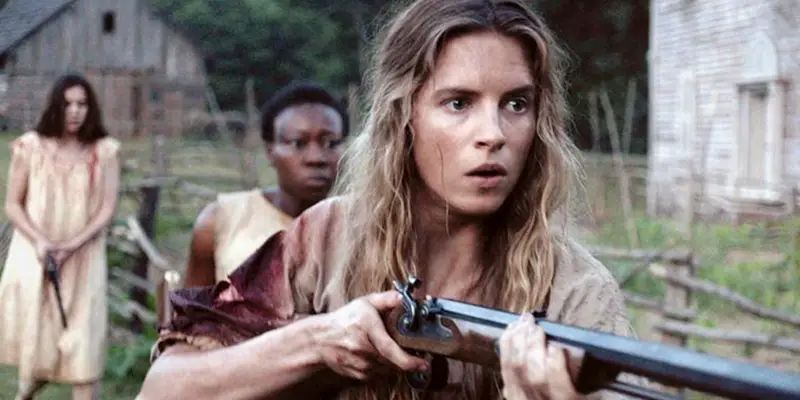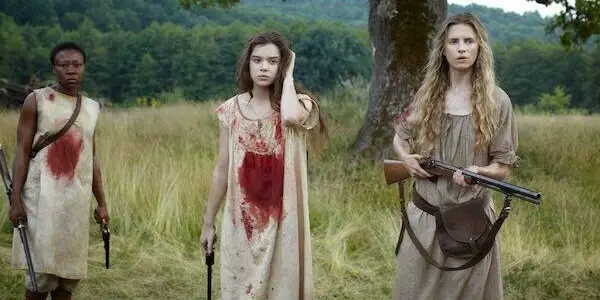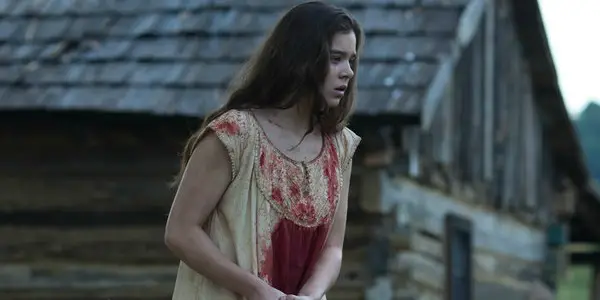THE KEEPING ROOM: Unflinchingly Violent, But Without Real Purpose

Alistair is a 25 year old writer based in Cambridge.…
To successfully make a genre hybrid that satisfies the needs of both genres is one of the most difficult accomplishments in modern mainstream cinema – something made even more difficult when the genres being mashed-up together couldn’t be in a sharper contrast. There is no sharp contrast between the elements to The Keeping Room, director Daniel Barber’s attempt at a feminist revision of Sam Peckinpah’s tales of masculinity in crisis in the old West.
A Peckinpah homage that pales in comparison to its influence
Essentially, The Keeping Room is a hybrid between the classical Western and the home invasion thriller, with fantasias of violence depicted in a gruesome and shockingly heartless way that would have made the old master proud. Peckinpah excelled at both genres, with his take on the theme of home invasion in Straw Dogs going on to live in pop-culture infamy to this day, due to its boundary pushing levels of horror depicted onscreen. Daniel Barber merely wants to make his film as equally shocking to modern audiences, coming off solely as a poor imitation that is at its most inspired when it feels like a different genre altogether.
Set in the dying days of the US Civil War in the South, the film initially follows two sisters (Brit Marling and Hailee Steinfeld) and their newly freed slave (Muna Otaru) as they adapt to the changes in society that stem from the impending conclusion of the war. In its earliest moments, the film represents that strangest of things – a social-realist Western about people adapting to the changes in society around them, set against the lusciously photographed backdrops of the American South. It promises a slow-burning Western, with the violence that punctuates the scenes feeling all the more brutal due to how it plays out in a dialogue-free manner, free of contextualisation.

If you haven’t studied this time period, or have no prior knowledge, the film goes out of its way to remain enigmatic in its earliest stages. It is here that the contrast with the film’s second half is most keenly felt and the tonally jarring nature of the film becomes apparent, with Martin Ruhe’s cinematography emphasising the conflicting relationship with the beauty of nature and the ugliness of the violence around it, in a way recalling Terrence Malick. The film’s cinematography is its highlight – Ruhe manages to make the filming locations of Romania eerily look like the Southern setting, whilst filming the violence in unflinching takes that never shy away from the full brutality.
The austere aesthetic that refuses to offer any justification for the depictions of the violence shown is distinctively arthouse, but rendered useless when the home-invasion B-movie plot is introduced and handled messily. Two soldiers cut adrift from the Union Army are fast approaching, leaving a trail of senseless violence in their wake (most notably an unflinching murder of an African-American woman in the introductory minutes).
Having seen the older sister at a bar the day prior, they trail her back to the family home, leading to a riff on Straw Dogs that is all the more unsettling due to the fact it feels like the director is trying to play a game of one-upmanship on Peckinpah. The horrors depicted are never affecting, remaining forever detached as they seem merely like genre demands; senseless violence for the mere sake of depicting senseless violence.
Femininity in Crisis
One reason these supposedly harrowing scenes fail to shock is due to casting; Sam Worthington plays the leader of the two rogue soldiers, whose bland acting style never makes a character who is clearly a psychopathic monster appear as a threat. Worthington is a rare screen presence so uninteresting he can star in the highest grossing box office hit of all time and still disappear quickly into pop-culture irrelevancy.His campy attempts at scenery chewing make him seem more like a comic book villain than a threat in this grimly realised West.
There are no truly standout performances here, although Hailee Steinfeld’s thinly drawn out character (reduced to whimpering for the majority of her screen time) still represents her best role since her breakout in The Coens’ True Grit, due to the dearth of quality roles she has been handed since.

The screenplay, from debutant writer Julia Hart, has many of the problems commonly associated with a first time screenplay. She has clearly attempted to make a feminist revision of the testosterone-fuelled world of Peckinpah westerns, with her strong female characters only appearing weak due to going head to head with raging psychopaths.
However, the themes inherent in her screenplay aren’t handled neatly, with only subtle hints of broader overarching themes about femininity. Even these get lost in translation due to director Daniel Barber’s love of violence over subtle social observation; his debut film Harry Brown was a wildly unrealistic, similarly brutal and easily detestable story of gang violence in the UK.
That film had aspirations to realism and was merely Death Wish 2.0, its vision of a broken Britain laughable to anybody who had ever lived in working class neighbourhoods as opposed to seeing them merely through the lenses of the hysterical right-wing press. The Keeping Room is certainly an improvement on his debut, but as he has dealt with screenplays tackling social issues twice it is obvious he should stay clear in the future; he handles the realist themes heavy-handedly, constantly making an uneasy bedfellow with his violent aesthetic.
Conclusion
The Keeping Room is visually stunning, but passionless. With the feminist themes lurking in the background but never explored in a satisfying manner, it is hard to see it as anything other than a missed opportunity.
What are the best revisionist Westerns? And has the genre ever made a satisfying feminist film?
The Keeping Room is out now on VOD and home media in the US, all international release dates are here.
Does content like this matter to you?
Become a Member and support film journalism. Unlock access to all of Film Inquiry`s great articles. Join a community of like-minded readers who are passionate about cinema - get access to our private members Network, give back to independent filmmakers, and more.
Alistair is a 25 year old writer based in Cambridge. He has been writing about film since the start of 2014, and in addition to Film Inquiry, regularly contributes to Gay Essential and The Digital Fix, with additional bylines in Film Stories, the BFI and Vague Visages. Because of his work for Film Inquiry, he is a recognised member of GALECA, the Gay & Lesbian Entertainment Critics' Association.













